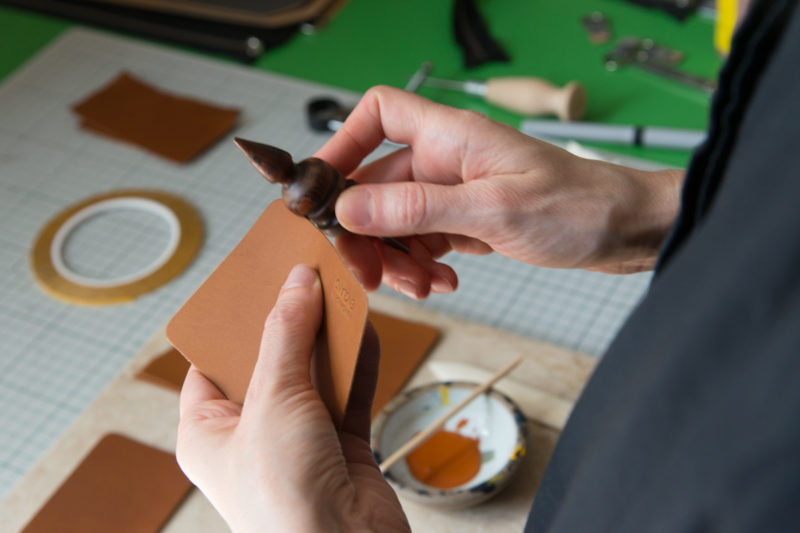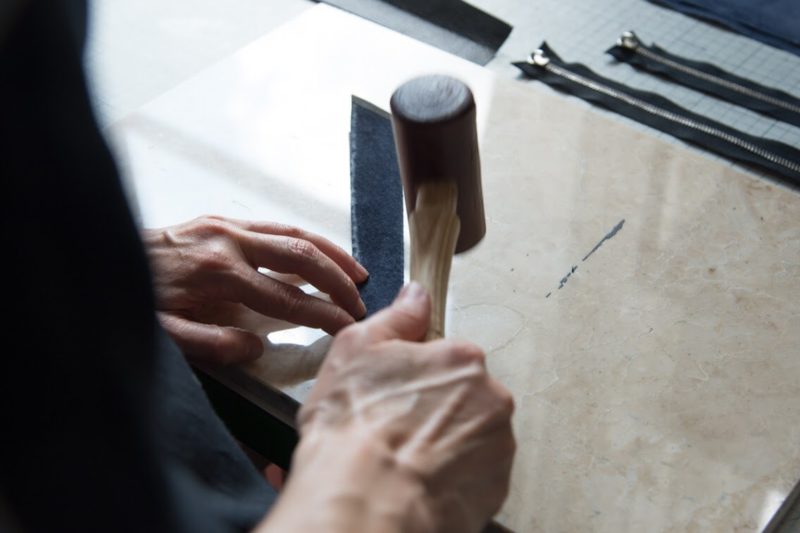Creating A Bespoke Custom-Made Leather Wallet
Creating your very own custom-made leather wallet will help you embrace your individuality, whilst creating something genuinely unique to you. The feeling of having a luxury leather wallet tailored only for you is one of the passions. We love to hear about people celebrating their differences, and what better way than creating your very own leather bespoke product.
We’ve outlined some simple steps to guide you in creating your own bespoke custom-made leather wallet.
Step 1 – Select The Style For Your Wallet
The first thing that you will need to make a wallet is a well-engineered design template. Pattern cutting may not be your forte, but a good leather product manufacturer can help you achieve functionality and great design for your product pattern. Alternatively, you might consider using a simple blueprint design from the internet, which should come with the correct dimensions so that it allows you to carry the tender of any world currency.
This type of wallet design is referred to by expert wallet makers as an ambrosian manifold, which consists of four pieces of leather, folded, stitch-assembled and bi-folded to create a single pocket wallet for your notes and slots for your cards.
There are, infact, approximately eight different types of wallet styles:
- Bifold Wallet
- Trifold Wallet
- Hybrid Slim Wallet
- Money Clip Wallet
- Money Clip with Pockets
- Breast Pocket Wallet (Otherwise known as Checkbook Wallet)
- Coin Wallet with Card Slot
- Cardholder Wallet
Whether you decide to create your own design or use the help of a leather wallet manufacturer to create a model, you’ll need to print the concept then and cut out a paper pattern.
Step 2 – Select The Leather For Your Wallet
Once you have decided on the style and got the paper pattern, the next step is to choose the type of leather you want to use for your bespoke custom-made wallet. You can choose from different types of leather, including:
- Smooth Leather
- Grainy Leather
- Vegetable Tan Leather
- Suede Leather
- Crocodile Leather
- Ostrich Embossed Leather
Whichever leather you choose, you will need approximately two square feet of material for a simple bifold wallet. A good type of leather to use to make bespoke wallet is vegetable-tanned leather that is of 2oz thickness. Leather thickness tends to be measured in ounces. However, if you want a thin wallet, then 1oz of leather is enough. Whichever leather you want for your wallet, the leather must be rigid so that you can create a secure leather wallet.
Step 3 – Choose The Threading For The Stitch
You may choose to dye the leather for your bespoke accessory. If you dye your leather, then be sure to prepare it well and condition it with wax. Then it’s time to find a colour of thread that compliments the colour of leather you chose. If unsure, consult a British leather wallet manufacturer. Using a thread colour that is darker than your leather is usually a good start. As for size, we recommend using a thread that is no smaller than TEX138 or larger than TEX270.
Step 4 – Equip Yourself With The Tools Required For Your Custom-Made Leather Wallet
Now that you have designed your wallet on paper, and chosen your leather and the thread, it’s time to either delegate the actual process to a leather products manufacturer or begin to make it yourself using the following tools:
- Scissors/Rotary Blade
- Razorblade
- Ruler
- Pushpins
- Awl
- Edge Beveler
- Ballpoint stitching needles
Step 5: Cut The Leather Components Using A Paper Pattern
It’s time to use your paper patterns and place them on to the leather so that you can cut out the components of the wallet. It is vital to do this in a clean straight line so use the ruler and scissors or a rotary blade. Pushpins will stop the paper from moving around. The edge beveler takes off the corner edge of your leather pieces and helps give a rounded look. Although not necessary, these small touches go a long way to getting your leatherwork to look neat – so it’s worth the effort.
Mark where you will place stitches and then use an awl to put evenly placed holes into the leather. Using an awl, press it through the marks to make a hole to stitch through. The holes need to be big enough for your needles and thread to pass through without any struggle.
Step 6: Assemble The Leather Components
Next, it’s time to assemble the leather components from the cuttings. Assemble the leather on top of each relevant section and ensure you crease the leather thoroughly to make sure that the stitching is easier to do. There are various methods to hand stitch your leather wallet.
Get Help From A Reputable British Leather Wallet Manufacturer
Suppose you have a design and scope. In that case, you can simply instruct a reputable fashion accessories manufacturer to help you create a custom-made, bespoke leather wallet.
CreateLab is a family of designers and leather artisans in the United Kingdom, and we are happy to help you with any leather projects, leather sourcing or making your first leather prototype.
You can contact us or book an appointment. We are based in the heart of Hackney on Morning Lane, just off Well Street and Hackney Walk – the capital’s fashion district.
RELATED ARTICLES
A GUIDE TO LEATHER GRADES
FIVE TIPS ON RECOGNISING GENUINE LEATHER FROM FAKE LEATHER
WHY LEATHER MANUFACTURERS CARE WHEN SOURCING THEIR GOODS
A BRIEF HISTORY OF LONDON’S LEATHER INDUSTRY AND WHAT WE HAVE LEARNT FROM IT
LUXURIOUS LEATHER CHECKLIST: WHAT TO KNOW BEFORE YOU BUY
7 PLACES TO FIND QUALITY GENUINE LEATHER IN LONDON
8 BENEFITS OF MANUFACTURING YOUR LEATHER GOODS LOCALLY
HOW TO STORE YOUR LEATHER GOODS





